Strangers often notice my handknit socks and comment something to the effect of, “Oh, those are beautiful! But I don’t think I could wear them around. They must be so delicate.”
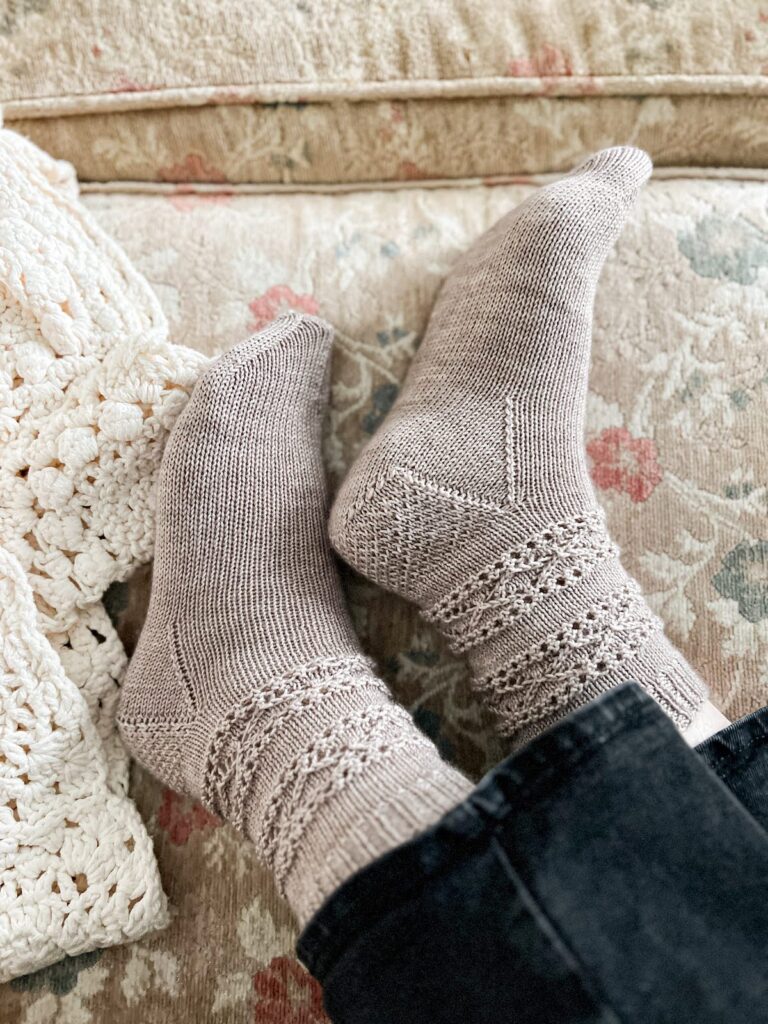
To be honest, that hasn’t been my experience of handknit socks, but I know one data point isn’t terribly reliable. I decided to ask around on social media, too, and got hundreds of responses from fellow sock knitters.
As you might expect, those responses really ran the gamut. After taking some time to sift through them, I’ve put the most common responses into a few different categories. Let’s summarize the findings here.
1. Handknit Socks are Durable if Knit at the Right Gauge
Many respondents noted that, so long as they knit at a tight enough gauge, their handknit socks were quite sturdy. While knitters often agonize over choosing the perfect sock yarn, it’s truly only part of the equation. For high-quality socks, you also need to think about the construction of the sock itself.
Here’s the thing: the more stitches per inch you have in your sock, the denser the sock material will be. The denser the material, the more likely you are to have a pair of durable socks.
I try to knit my socks at a gauge of about 8 stitches per inch. This is, of course, assuming I’m using fingering-weight yarn (I usually am). If I knit socks in a thicker yarn like a DK weight, I might go for slightly fewer stitches per inch (say, 6 or 7 per inch), but I try to keep the knitted fabric as dense as possible.
One note of caution: it is possible to eventually make your stitches so dense that fabric becomes uncomfortably stiff. Most people find that more than 9 or 10 stitches per inch can be a little unpleasant. Depending on the weight of the yarn you use, you may want even fewer stitches than that.
2. Handknit Socks are Durable if Knit from the Right Yarn
I’ve written extensively on the topic of how to choose the best sock yarn, so I won’t belabor the point here. Suffice it to say, though, that you don’t want to just choose a soft yarn. You want to choose a sock yarn with a sturdy fiber and construction. Yarn with multiple plies and a tighter twist will hold up better under regular use.
If using a wool yarn, you’ll be faced with a few choices. The first question is whether to knit pure wool socks or to choose a nylon blend. There are some knitters who swear that wool-nylon sock yarns are more durable. Others will tell you that the nylon content is irrelevant. As I’ve mentioned elsewhere, I think the more important question is the yarn construction and the type of wool used. More on that in a minute.
The other question you’ll be faced with is whether to use a superwash wool (this is most commonly a superwash merino wool, though other varieties are sometimes available) or a non-superwash wool. Some knitters don’t use superwash wool because of environmental concerns (most of the time, superwash wool is processed using chemicals). Others don’t use superwash wool because it takes dye differently when compared to non-superwash yarns. Some knitters don’t use superwash because they don’t like the feel of it. Still others actually prefer superwash wool because, if the socks accidentally end up in the washing machine, they’re less likely to be damaged. Ultimately, I don’t think either of these options has a significant advantage over the other when it comes to durability.
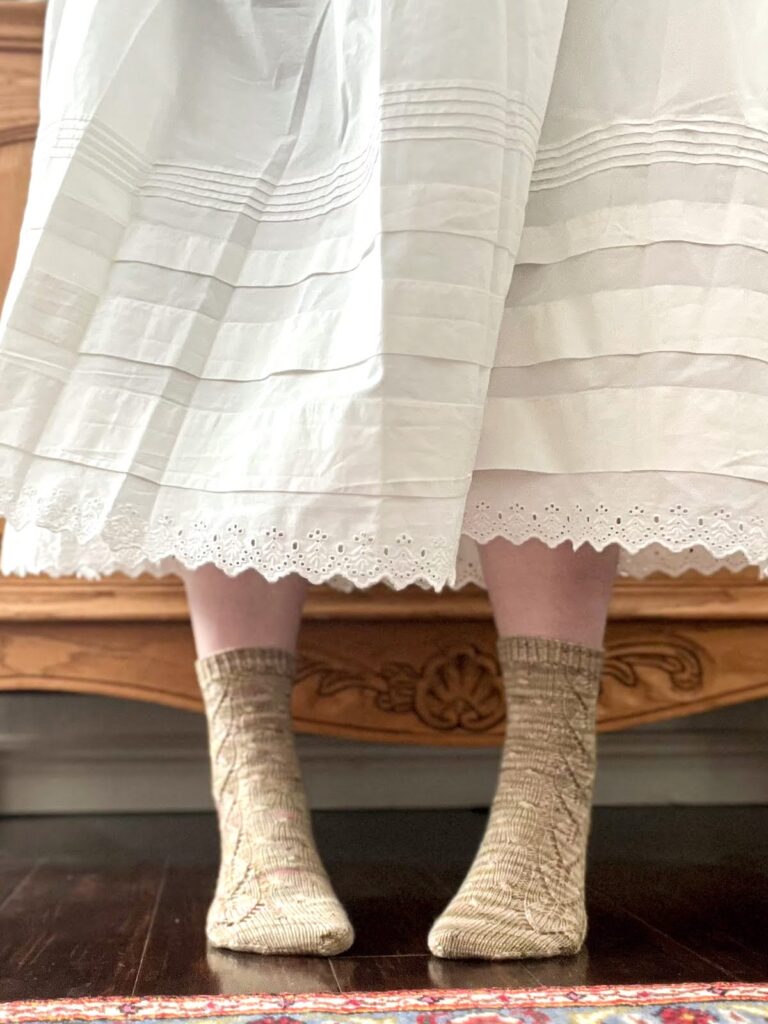
3. Handknit Socks are Durable if Cared For Properly
I recently saw a video on TikTok from a woman who washed her Sezane sweater like it was a hoodie. It felted until it was teddy-bear-sized. I felt awful for her.
But it brings me to an important point: handknit socks often require a little more care than store-bought socks. Failing to care for them can affect their durability. If you wash your socks in water that’s too hot, you will damage the fibers, either by weakening them or by felting them. If you throw your non-superwash wool socks into the washer and dryer, they will not be usable.
This isn’t really a durability issue caused by wearing the socks, of course. Laundering is part of the normal sock use cycle, though, so I thought it was probably worth bringing up here. I hand wash mine in the sink, just to be safe. Others machine wash on a gentle cycle, sometimes with a mesh bag to protect the socks a little more.
4. Handknit Socks are Durable if You Make Enough of Them
When I asked knitters about their impression of how durable handknit socks are, I got a few cheeky responses to the effect of, “They last forever if I knit them faster than I can wear them!”
But there’s something to this. If you only have one of something, and you wear it all the time, it will wear out more quickly than if you can rotate it with a few similar things. The same is true for sweaters, jackets, and so on.
You probably don’t need so many pairs of handknit socks that you never wear any of them more than once, but having a few pairs in your rotation will reduce the amount of wear and tear on any one pair.
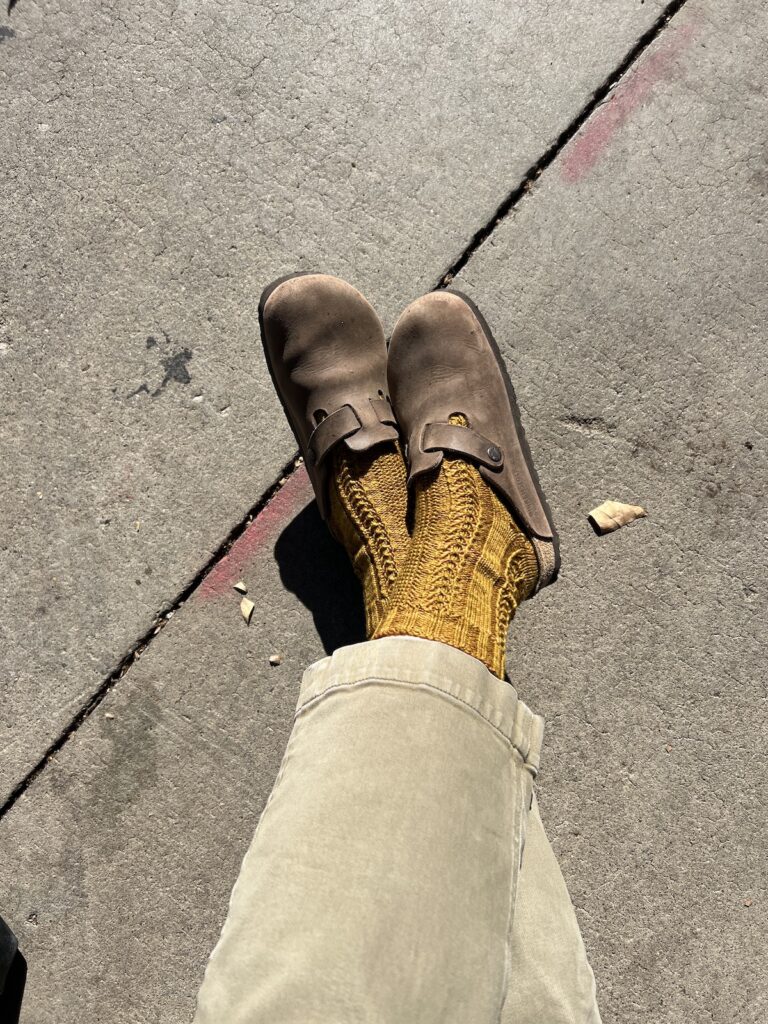
5. Handknit Socks are Durable if You Choose the Right Fiber Content
I firmly believe that there’s a project for every yarn and a yarn for every project, but when it comes to sock knitting, it’s no secret: I prefer natural fibers over synthetic materials. There are a lot of reasons for that, but the biggest reason I prefer natural sock yarn is because it absorbs moisture better than acrylic does. This is good both for wet weather and for sweaty feet (it’s okay, feet sweat, that’s just part of life).
Ask an avid sock knitter, and nine times out of ten, they’ll tell you they prefer to knit with wool. While most sock yarn blends include at least a little nylon, the proportion of wool is still high enough (at least 75%) to be absorbent and comfortable.
Not all wools are the same, though, and it’s important to look for wools that are more durable. This is going to depend on the staple length of that wool. Sheep breeds with a longer staple length, like Bluefaced Leicester and Romney, are popular for sock knitting.
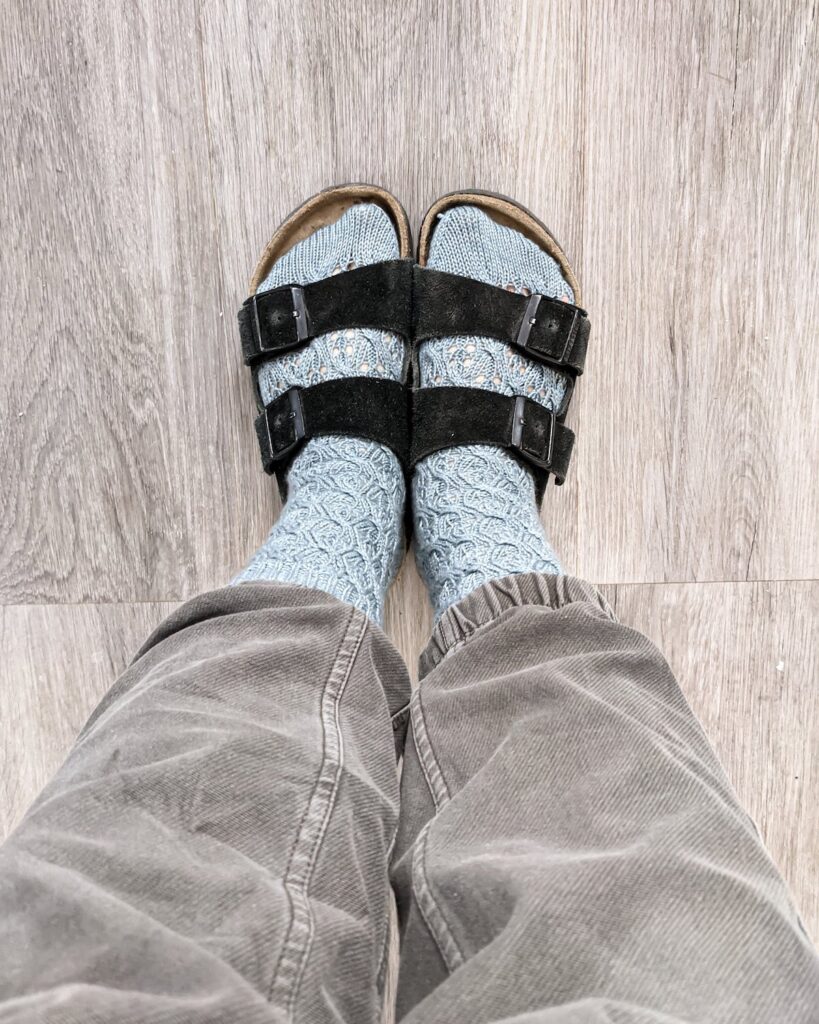
6. Handknit Socks are Durable if You Choose the Right Sock Construction
Related to gauge, above, is the question of how your sock itself is put together. Some sock knitting methods create socks that are easier to mend than others, while others are more durable from the jump.
For example, all of my sock patterns include a slip stitch heel, which is a method of reinforcement that creates a double layer of yarn. This gives you a reinforced heel at the spot where many people are most likely to wear holes in their socks. An extra thick sock heel can stand up to a little bit more wear and tear than the average heel can.
Some socks use a forethought or afterthought heel. While I’m not a fan of how these heels fit, they’re great for mending. This heel construction can be easily removed when it sprouts a hole, and then you can just knit a new heel in the exact same spot.
Knitters who tend to wear through their socks in the toe areas might also find that a little reinforcement can help protect their hard work. You can do this by holding the yarn double with a very find strand of silk or nylon, or by using a tapestry needle to weave in some reinforcement. Note that if you use the first method, this won’t actually prevent the wool from wearing away, but it will give you a scaffold that you can use for easily darning the toe instead of having to deal with a full-on hole.
Finally, if you tend to knit top-down socks like I do, these socks are easier to unravel and reknit in the spots where holes sprout. Few sock knitters get holes in the leg of their socks, but legs in the toes, balls of the foot, and heels are very common. When you start knitting your sock at the cuff and finish at the toe, you can more easily frog back to a hole in the foot.
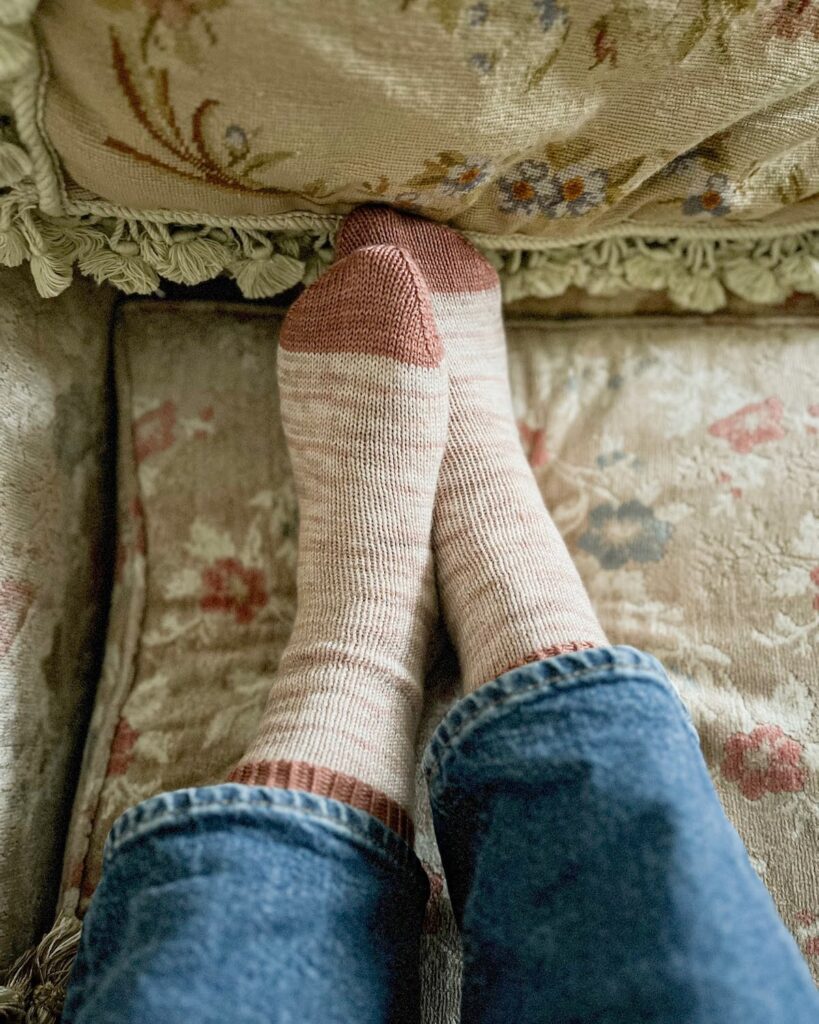
BUT! Some People Might Still Find Handknit Socks Aren’t Right for Them
I did receive a few comments from people whose needs were probably incompatible with making their handknit socks last for long, though I’m not sure store bought socks would fare much better.
One person commented that their sharp toenails or rough foot calluses often wore holes in their socks. A few others commented that they just do too many miles in an average day for their handknit socks to hold up (we’re talking 10-15 miles a day).
In that case, it probably does make more sense to just keep buying store bought socks, which aren’t necessarily more durable than handknit socks but are at least cheaper and easier to get. Between the price of the yarn and the amount of time you’ll spend on your knitting project, you’ll probably feel less grief if you quickly wear through a pair of $2 cotton socks from the store.
Let’s stay connected!
Join my newsletter for 30% off all new releases, regular updates with helpful tips and tricks, first crack at registration for upcoming workshops, exclusive discounts, and more.
Join the A Bee In The Bonnet Facebook Group to participate in knitalongs and other fun community events
Come hang out with me on the A Bee In The Bonnet TikTok
Follow along on the A Bee In The Bonnet Instagram
Get inspired via the A Bee In The Bonnet Pinterest

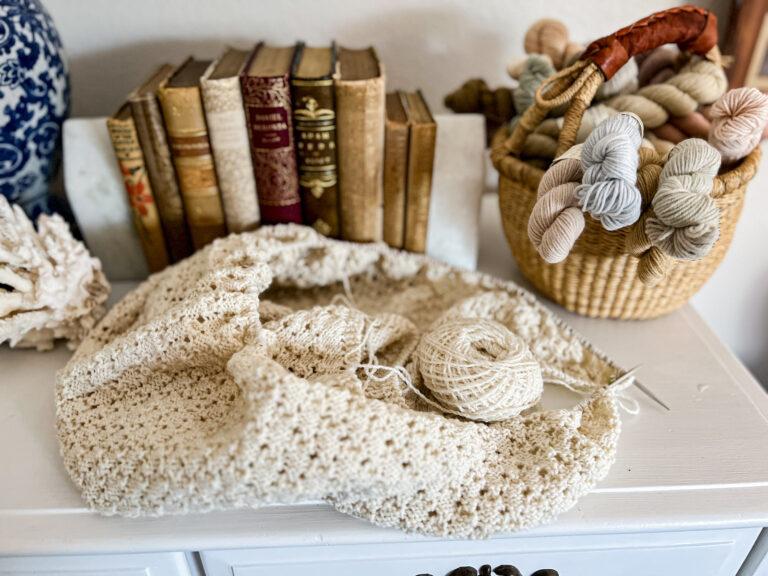
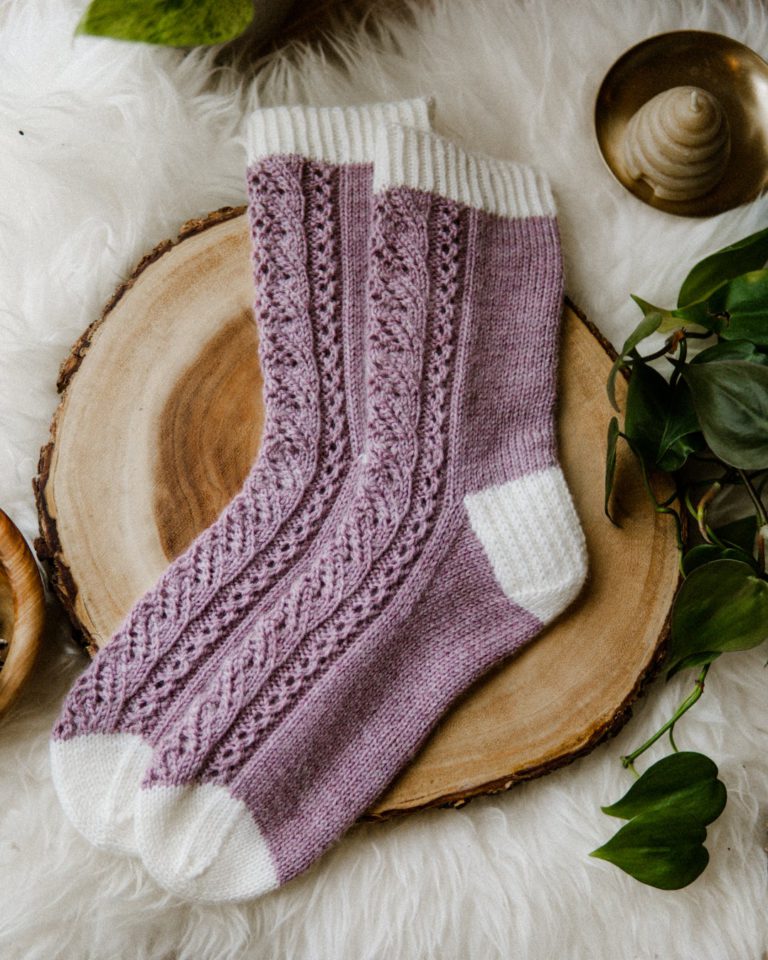
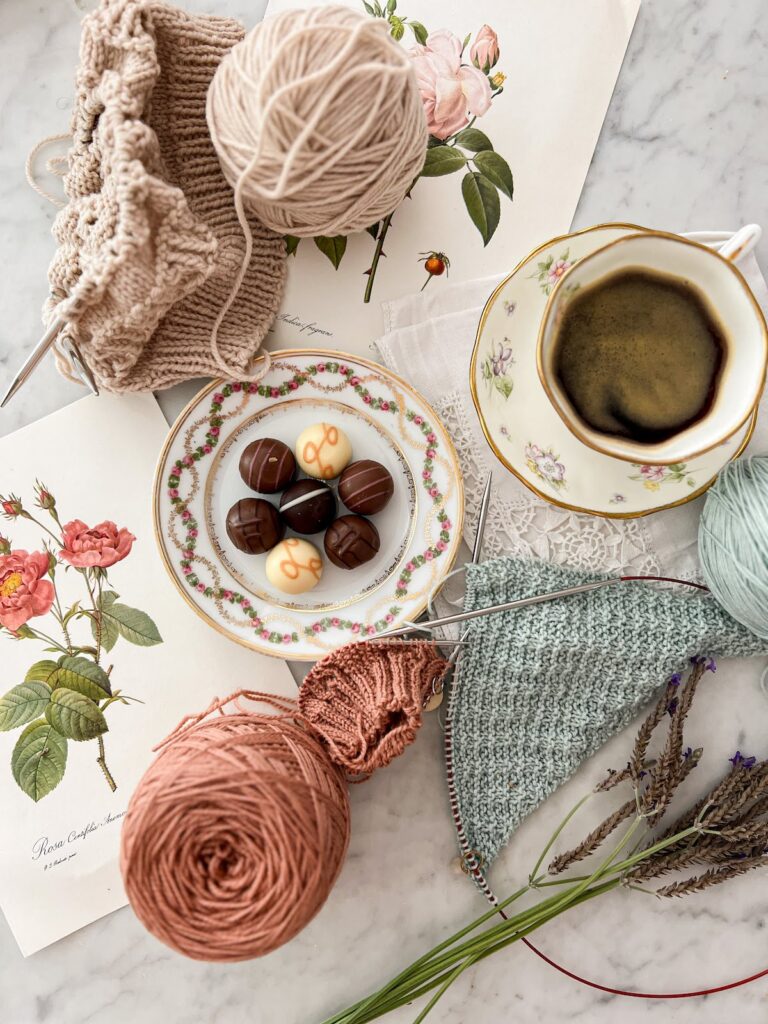
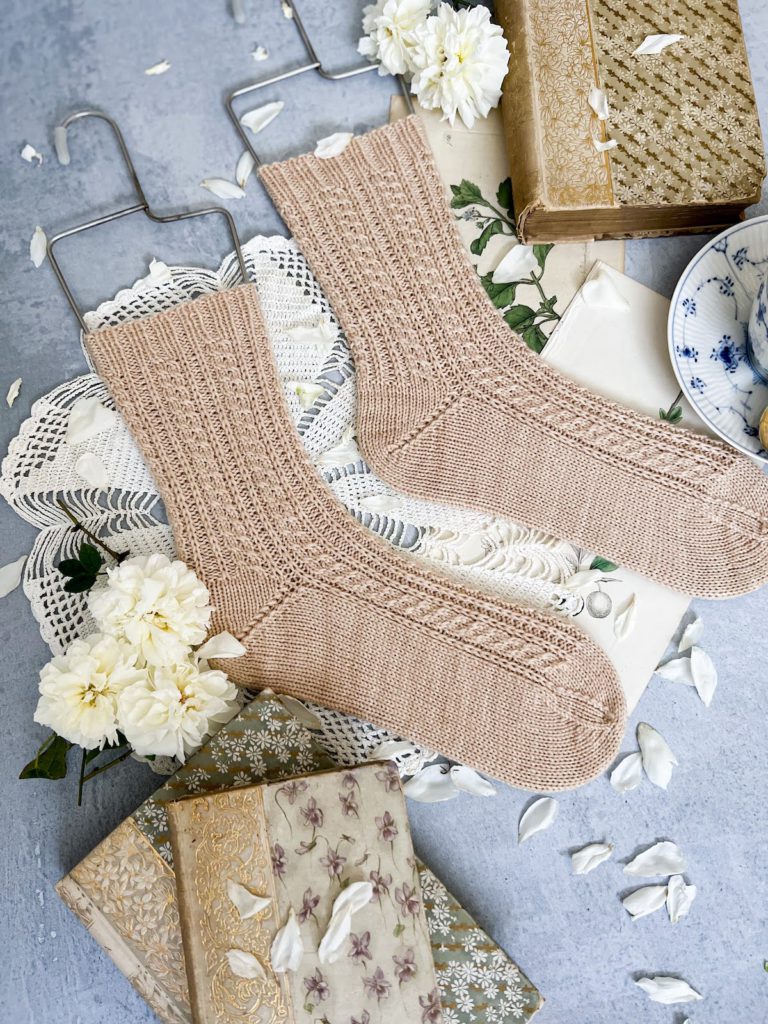
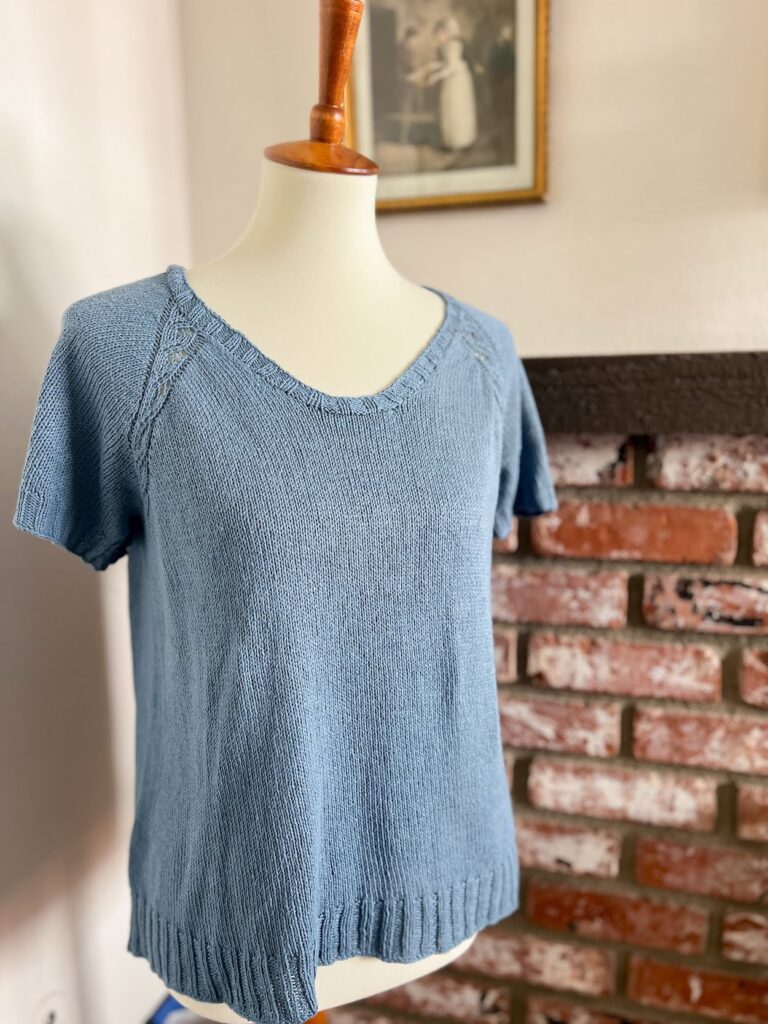
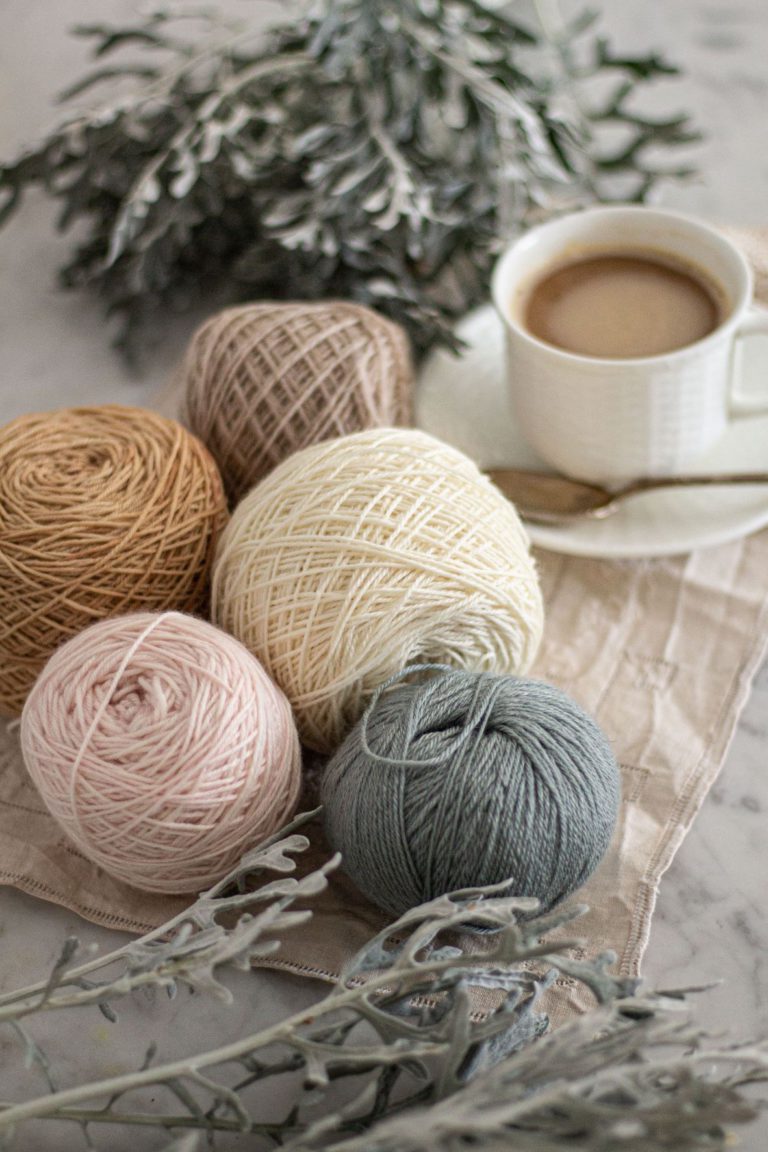
When I first started knitting socks I went with the large size because I’m a tall drink of water. They didn’t fit correctly and wore out.. After lots of trial and error I go with the smallest size and knit to where I need to insert the heel. I make toe up socks. I also found that the higher end and more expensive the sock yarn the quicker my socks wore out. Why? Idk. I use Kroy sock yarn and my socks last longer.
Sometimes, higher end yarns are expensive because they’re very soft, but the very soft wool isn’t necessarily the most durable wool. Then that issue can be compounded by fragile yarn construction. It can be a real pain to sift through options when you can’t touch them and examine them up close!